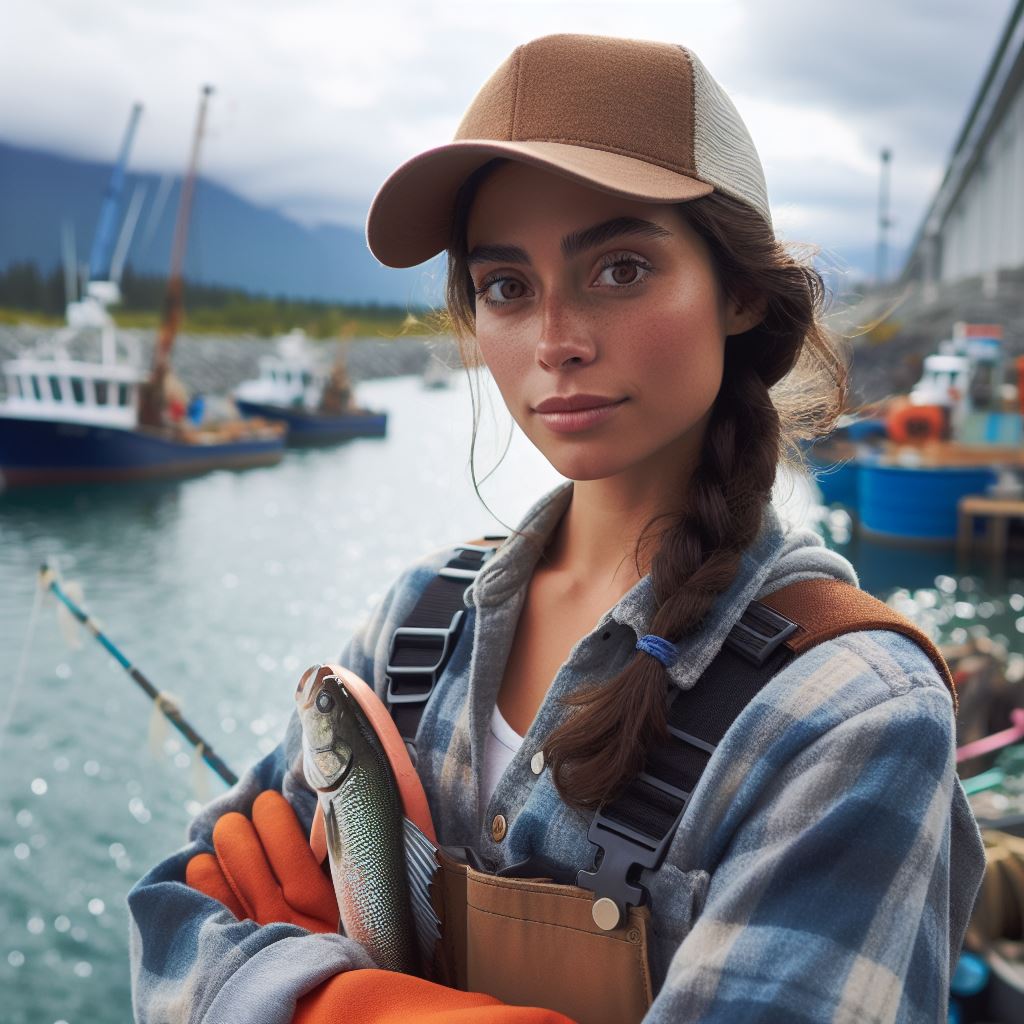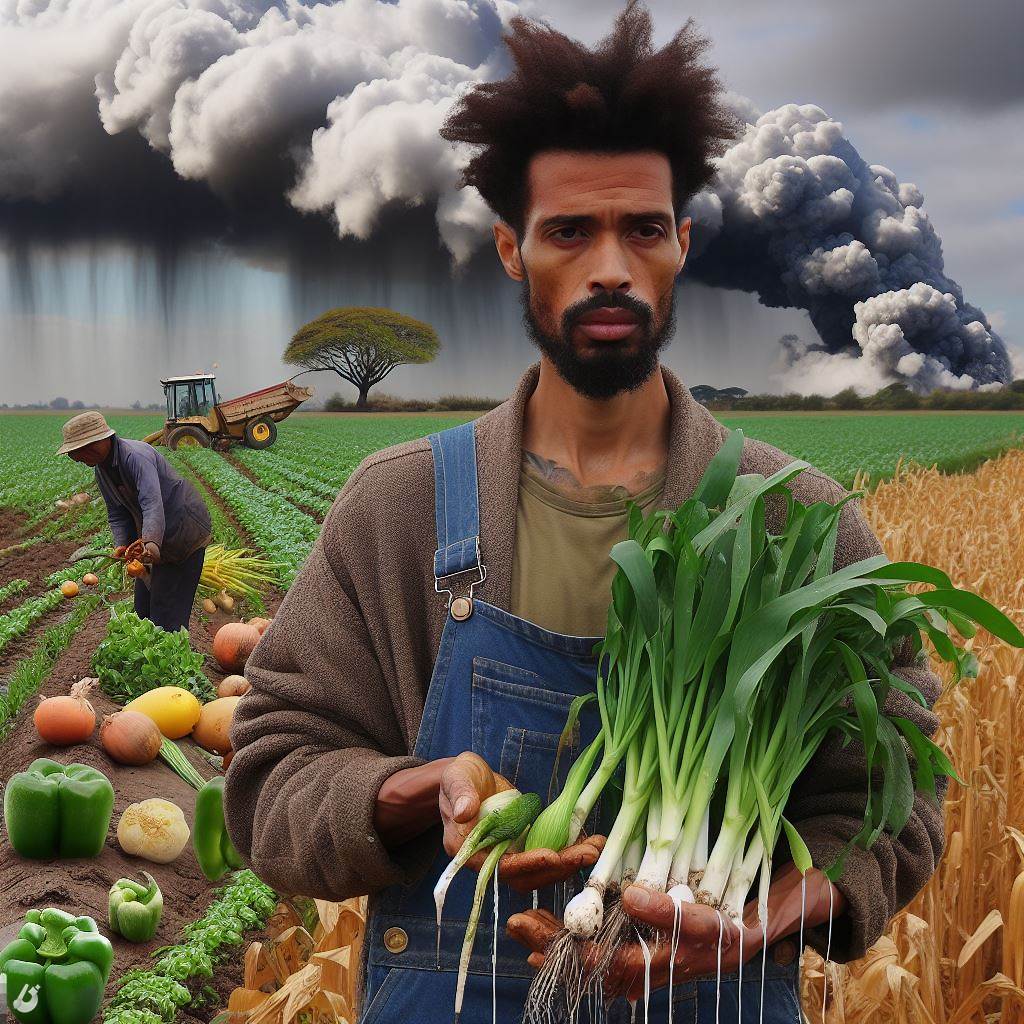Introduction
Canada is a country with a deep reliance on its fisheries, making fishery conservation efforts crucial.
Fishery conservation focuses on preserving fish stocks and the ecosystems they depend on to ensure sustainable fishing practices.
Importance of fisheries in Canada
Fisheries play a vital role in Canada’s economy, particularly in coastal communities, providing employment and supporting businesses in the fishing industry.
Additionally, fish is a valuable food source, contributing to the country’s food security.
To protect and enhance fish populations, Canada has implemented various fishery conservation efforts.
These initiatives aim to prevent overfishing, minimize bycatch, protect habitat and spawning grounds, and promote sustainable fishing practices.
One of the key strategies is the establishment of fishing quotas or total allowable catches (TACs) for different fish species.
TACs help control fishing pressure and ensure that fish populations have the opportunity to replenish their numbers.
Brief explanation of fishery conservation efforts
In addition, Canada has implemented measures such as size limits, gear restrictions, and seasonal closures to protect vulnerable species and reduce the impact on non-target species.
These regulations are enforced through monitoring, surveillance, and licensing systems.
The government also works closely with scientific organizations to conduct research on fish populations, monitor fish health, and gather data on fishing activities.
This information helps inform management decisions and adapt conservation measures as needed.
Collaboration with Indigenous communities is another crucial aspect of fishery conservation in Canada.
Indigenous knowledge and practices are integrated into the decision-making processes, acknowledging the important role of Indigenous peoples as stewards of the land and water.
Therefore, fishery conservation efforts in Canada are essential for maintaining the sustainability of fish stocks, supporting the economy, and preserving the environment for future generations.
History of Fisheries in Canada
Early fishing practices
Fishing has been a vital activity in Canada for centuries, with Indigenous peoples relying on it for sustenance and trade.
Early fishing practices in Canada can be traced back to ancient times when Indigenous peoples relied on these waters for sustenance and trade.
They had a deep connection with the environment, using sustainable fishing practices that maintained the balance of fish populations.
However, with the arrival of European settlers, overfishing became a significant threat to Canada’s fisheries.
The fisheries played a crucial role in the economy, attracting settlers for its abundant resources.
The lack of regulations and understanding of sustainable fishing practices led to the rapid depletion of fish populations.
Overfishing and its consequences
Unfortunately, as European settlers arrived, overfishing became a pressing issue, depleting fish populations and disrupting ecosystems.
The consequences of overfishing were devastating.
Fish stocks began to decline rapidly, leading to the collapse of some commercially valuable species.
The disruption of the food chain had detrimental effects on other marine organisms and ecosystems, further exacerbating the crisis.
Unlock Your Career Potential
Visualize a clear path to success with our tailored Career Consulting service. Personalized insights in just 1-3 days.
Get StartedRecognizing the urgent need to address these issues, the Canadian government implemented various conservation efforts to protect and restore fish stocks.
The Fisheries Act, first established in 1868, aimed to regulate fishing activities and conserve fish populations.
It prohibited destructive practices and set limits on catch sizes and fishing seasons.
The establishment of the Department of Fisheries and Oceans (DFO) in 1979 further emphasized the importance of fisheries management and conservation.
The DFO became responsible for the sustainable management of fisheries, conducting research, monitoring fish populations, and enforcing regulations.
To ensure the long-term sustainability of fish stocks, the Canadian government also implemented quota systems and fishing licensing programs.
These initiatives aimed to control the amount of fish caught and promote responsible fishing practices.
They also introduced measures such as seasons and zones to protect spawning grounds and sensitive habitats.
Need for conservation efforts
Recognizing the need for conservation, the Canadian government implemented various measures to protect and restore fish stocks.
Collaboration with Indigenous communities has also been essential in fishery conservation efforts.
Indigenous knowledge and traditional fishing practices have provided valuable insights into sustainable resource management.
Their involvement in decision-making processes has helped bridge gaps and enhance conservation efforts.
Furthermore, Canada has actively participated in international agreements and organizations dedicated to fishery conservation.
The country has worked alongside other nations to establish fishing quotas, conserve migratory species, and protect marine ecosystems.
While progress has been made, challenges and threats still exist.
Climate change, habitat loss, and pollution continue to impact fish populations and their habitats.
The need for ongoing research, monitoring, and adaptive management remains crucial in ensuring the success of ongoing conservation efforts.
Basically, the history of fisheries in Canada reflects a journey from unsustainable practices to an increased focus on conservation.
From early fishing practices by Indigenous peoples to the current conservation efforts led by the government and various stakeholders, the goal remains the same – preserving fish stocks and ecosystems for future generations.
Read: Logging Camp Life: A Worker’s Perspective
Current State of Canadian Fisheries
Canada is home to a vast variety of key fish species, which play a crucial role in its marine ecosystem.
Overview of Key Fish Species in Canada
Some of the notable fish species found in Canadian waters include Atlantic salmon, Pacific salmon, cod, herring, and halibut.
Atlantic salmon, known for their vibrant color and exceptional taste, are highly valued by both commercial and recreational fishermen.
Pacific salmon, consisting of five main species—Chinook, Coho, Sockeye, Pink, and Chum—are an essential part of the West Coast’s ecosystem and provide a significant economic boost to local communities.
Cod, once abundant in the Atlantic regions, has faced a severe decline in recent decades due to overfishing.
Similarly, herring populations have declined, impacting the marine food chain and fisheries dependent on them.
Halibut, a flatfish species, is another important fishery in Canada, providing a valuable source of income for coastal communities.
Threats to Fish Populations
Several factors have posed threats to the fish populations in Canada’s waters, endangering their sustainability.
Overfishing, driven by increasing global demand for seafood, has been a significant concern in Canadian fisheries.
Illegal, unreported, and unregulated fishing practices also contribute to the depletion of fish stocks and disrupt the balance of marine ecosystems.
Climate change impacts, such as rising water temperatures, ocean acidification, and changing currents, affect the availability of food and habitat for fish species.
Pollution, including sewage, chemicals, and plastics, further deteriorates the quality of marine environments and harms fish populations.
Destruction of critical habitats, such as wetlands and spawning grounds, due to human activities increases the vulnerability of fish species.
Importance of Sustainable Fishing Practices
Recognizing the risks associated with declining fish populations, Canada has prioritized sustainable fishing practices to protect its marine resources.
Sustainable fishing aims to ensure that fish populations can replenish themselves and support both environmental and human needs in the long term.
Implementing science-based regulations, such as catch quotas and size limits, helps in preventing overfishing and maintaining healthy fish stocks.
Enforcement of fisheries laws and regulations is crucial to combat illegal fishing and hold accountable those who violate sustainable practices.
Engaging in responsible fishing practices, such as using selective gear, minimizing bycatch, and avoiding sensitive habitats, contributes to conservation efforts.
Collaboration between government agencies, fishing communities, and conservation organizations is essential to develop and implement effective fishery management strategies.
Public awareness and education on sustainable fishing practices create a shared responsibility towards preserving Canada’s fish populations and marine ecosystems.
By adopting sustainable fishing practices, Canada can ensure the continued existence of its valuable fish species for future generations to enjoy.
Read: The Role of Technology in Modern Forestry
Legislation and Policies
Overview of key laws and regulations
- The Fisheries Act is an important legislation governing fishery conservation in Canada.
- It provides regulations on the management, protection, and conservation of fish habitats.
- Other relevant regulations include the Species at Risk Act, which specifically protects endangered species.
- Provincial and territorial governments also have their own legislation on fishery conservation.
- These laws focus on sustainable fishing practices and prevention of overfishing.
- Regulations also address issues such as minimum size limits, bag limits, and fishing seasons.
Fisheries and Oceans Canada’s role
- Fisheries and Oceans Canada (DFO) is the federal department responsible for fishery conservation.
- DFO monitors and manages fish populations, habitats, and ecosystems to ensure their sustainability.
- They conduct scientific research and collect data to inform decision-making on fishery management.
- DFO also enforces fisheries laws, licenses commercial and recreational fishing, and promotes compliance.
- Through partnerships and collaborations, DFO works to protect and restore fish habitats.
Collaborative efforts with local communities and organizations
- Canada recognizes the importance of involving local communities and organizations in fishery conservation efforts.
- Collaboration ensures that diverse perspectives are considered in decision-making processes.
- Local communities often have traditional knowledge and practices for sustainable fishing.
- Efforts include co-management agreements, where Indigenous communities are involved in fishery management.
- Non-governmental organizations (NGOs) play a crucial role in advocating for fishery conservation.
The collaboration between DFO, local communities, and organizations is crucial for effective fishery conservation in Canada.
It allows for the integration of scientific knowledge, traditional practices, and community-based approaches.
Together, they work towards the common goal of protecting fish populations and their habitats.
This collaborative approach recognizes the interconnectedness between healthy ecosystems, sustainable fishing practices, and local livelihoods.
By engaging stakeholders and empowering local communities, Canada strengthens its fishery conservation efforts.
Through ongoing partnerships, they continuously improve and adapt their strategies to address new challenges.
With the combined efforts of legislation, government agencies, and local communities, fishery conservation in Canada remains a priority.
By promoting responsible fishing practices, enforcing regulations, and protecting ecosystems, Canada sets an example for global fishery conservation.
It ensures that future generations can also enjoy the abundance and diversity of fish species in its waters.
Read: Canadian Forestry Laws and Regulations
Conservation Methods
Conservation efforts in Canada are crucial to ensure the sustainability of fish populations and the health of marine ecosystems.
In order to achieve this, various methods and strategies are employed to protect and manage fisheries effectively.
Introduction to different fishery conservation techniques
Effective fishery conservation techniques are essential to promote the long-term health and sustainability of fish populations.
These techniques include:
- Establishing protected areas: Creating marine protected areas where fishing activities are restricted or prohibited helps in conserving vulnerable fish species and their habitats.
- Implementing selective fishing practices: Using selective fishing gear and techniques can minimize bycatch and avoid catching undersized fish, allowing them to thrive and contribute to population growth.
- Implementing gear restrictions: Regulating the types and sizes of fishing gear used helps in minimizing the impact on non-target species and habitats.
- Promoting responsible fishing practices: Encouraging fishermen to adopt sustainable practices, such as proper handling and releasing of undersized fish, reduces unnecessary mortality.
- Engaging in stock assessment and monitoring: Regular monitoring of fish populations and their habitats enables better management decisions and the identification of potential conservation measures.
Setting catch limits and quotas
One of the key methods used in fisheries conservation is the implementation of catch limits and quotas.
Catch limits are the maximum amount of fish that can be legally caught and retained by individual fishermen or fishing vessels.
Quotas, on the other hand, allocate a specific portion of the total allowable catch to each fishing entity.
These measures help prevent overfishing and ensure that fish populations have the opportunity to replenish themselves.
By controlling the amount of fish removed from the ecosystem, catch limits and quotas aim to maintain sustainable population levels and prevent the decline of fish stocks.
Implementing fishing seasons and area closures
Fishing seasons and area closures are another important conservation method used in Canada.
Fishing seasons determine the time period during which fishing activities are allowed for specific species or areas.
By restricting fishing during certain periods, the spawning and reproductive cycles of fish can be protected, allowing populations to replenish and ensuring their long-term abundance.
Area closures involve closing specific fishing grounds or regions to allow for the recovery and protection of vulnerable habitats and species.
These closures are often based on scientific data and aim to safeguard important breeding and feeding areas.
They are implemented to prevent overfishing and protect sensitive ecosystems from detrimental fishing practices.
Lastly, fishery conservation efforts in Canada involve the adoption of various techniques and strategies.
These include the establishment of protected areas, the implementation of selective fishing practices, the use of gear restrictions, the promotion of responsible fishing practices, and the engagement in stock assessment and monitoring.
Additionally, the setting of catch limits and quotas, as well as the implementation of fishing seasons and area closures, play a crucial role in maintaining sustainable fish populations and preserving marine ecosystems for future generations.
Read: Sustainable Practices in Forestry Today

Successful Conservation Initiatives
- Case studies highlight effective fishery conservation efforts implemented in Canada.
- Efforts include implementing sustainable fishing practices and protecting critical fish habitats.
- One successful initiative is the Atlantic Salmon Conservation Foundation’s restoration project in Nova Scotia.
- Through collaboration with local communities, the project restored salmon populations and habitats.
- Another successful initiative is the Pacific Salmon Foundation’s work in British Columbia.
- The foundation focuses on habitat restoration, education, and research to conserve salmon populations.
- Positive results of these initiatives are evident in the increased abundance of salmon species.
- Salmon stocks have rebounded, providing economic and ecological benefits to local communities.
- In addition to salmon, other fish species, such as cod and herring, have also seen population recoveries.
- Conservation efforts in Canada have led to improved fisheries management and sustainable practices.
- Collaboration between government, Indigenous communities, and non-profit organizations has been crucial.
- Efforts to involve local communities have fostered a sense of ownership and commitment to conservation.
Positive impact on fish populations
Conservation initiatives in Canada actively prevent fish decline and aid recovery
- Restoration of critical habitats supports breeding and feeding grounds.
- Protected areas and fishing restrictions allow time for replenishment and reproduction.
Fish populations, like Atlantic and Pacific salmon, show recovery, promoting
- Sustainable fishing practices.
- Increased industry viability.
Canada’s successful conservation serves as a global model
- Prioritizing habitat protection.
- Implementing sustainable fishing practices.
Case studies highlight initiatives like
- Atlantic Salmon Conservation Foundation’s Nova Scotia restoration project.
- Pacific Salmon Foundation’s work in British Columbia.
Initiatives focus on habitat restoration, education, and research, ensuring
- Survival and abundance of fish populations.
- Local community involvement and responsibility.
Collaboration among government, Indigenous communities, and non-profits proves vital
- Notable success story: recovery of salmon populations.
- Conservation benefits the environment and local economies.
Positive impacts extend beyond fish populations
- Revitalized fisheries management.
- Improved practices and sustainable approaches.
Canada sets an example for nations
- Emphasizing the importance of protecting fish habitats.
- Implementing sustainable fishing practices.
Fishery conservation success in Canada results from
- Implementation of sustainable practices.
- Restoration of critical habitats.
The recovery of salmon stocks showcases initiative effectiveness
- Involvement of local communities and collaboration.
- Canada leads in fisheries conservation, influencing global efforts.
Challenges and Solutions
Fishery conservation in Canada faces several challenges that hinder the sustainability of fish populations and marine ecosystems.
These challenges must be addressed through innovative solutions and active engagement from all stakeholders.
Identification of challenges in conserving fisheries
The identification of challenges plays a crucial role in understanding the root causes of fishery decline.
Overfishing, caused by excessive fishing activities, leads to the depletion of fish stocks and disrupts the balance of marine ecosystems.
Additionally, habitat destruction, such as bottom trawling or the destruction of coastal habitats, also negatively impacts fish populations and their habitats.
Moreover, climate change poses a significant challenge to fishery conservation efforts.
Rising temperatures and ocean acidification alter water conditions, leading to shifts in the distribution and abundance of fish species.
These changes disrupt the delicate balance of ecosystems and further strain fish populations.
Another challenge is the lack of accurate data on fish populations and fishing impacts.
Without reliable information, it becomes difficult to develop effective management and conservation strategies.
Additionally, the issue of illegal, unreported, and unregulated (IUU) fishing undermines conservation efforts and worsens the decline of fish stocks.
Overcoming obstacles through innovative approaches
To overcome these obstacles, innovative approaches are vital.
Promoting sustainable fishing practices that minimize bycatch and habitat damage can help preserve fish populations and their habitats.
Ecosystem-based fisheries management, which considers the broader ecological interactions, ensures the long-term sustainability of fish populations.
Utilizing cutting-edge technologies is another solution to conserve fisheries.
Advanced fishery tracking systems enable better monitoring and management of fishing activities.
DNA analysis helps identify and track fish species, aiding in the prevention of illegal fishing practices.
These technologies enhance the accuracy of data, allowing for more effective conservation measures.
Partnerships with Indigenous communities are crucial in integrating traditional knowledge and practices into fishery conservation efforts.
Indigenous communities have a deep understanding of local ecosystems and can contribute valuable insights.
Collaborating with them enables governments and fisheries to develop culturally sensitive and sustainable management approaches.
Considering alternative sources of protein is also essential to reduce fishing pressure on wild fish stocks.
Exploring and promoting sustainable aquaculture practices can provide a reliable and sustainable food source while reducing the exploitation of marine resources.
Engagement and education of stakeholders are fundamental in achieving successful fishery conservation in Canada.
Involving fishing industry representatives, government officials, non-governmental organizations, and local communities in decision-making processes encourages collective responsibility and cooperation.
Importance of stakeholder engagement and education
Creating awareness about the importance of sustainable fisheries and their economic value is crucial for garnering support and fostering positive change.
Training and educating fishermen on responsible fishing practices, such as proper gear usage and selective harvesting, are vital to reduce ecological impacts.
Furthermore, community-based initiatives empower local communities to take an active role in sustainable fishing and resource management.
By promoting cooperation and knowledge-sharing among different stakeholders, valuable insights and best practices can be exchanged, leading to more effective fishery conservation efforts.
Overall, conserving fisheries in Canada requires identifying and tackling various challenges through innovative approaches, stakeholder engagement, and education.
By implementing sustainable practices, adopting new technologies, and involving all key actors, Canada can ensure the long-term preservation of its fish populations and marine ecosystems.
Future of Fishery Conservation in Canada
Emerging technologies and their role in conservation
Emerging technologies such as satellite tracking and underwater drones are revolutionizing fishery conservation efforts.
These technologies help monitor fish populations, track their movements, and identify critical habitats for protection.
By providing real-time data, these technologies enable better decision-making and allow for more targeted conservation strategies.
Furthermore, advancements in genetic techniques have enabled scientists to understand the genetic diversity and health of fish populations.
These technologies play a crucial role in enhancing our understanding of fish populations and guiding effective conservation initiatives.
Future strategies to ensure long-term sustainability
To ensure long-term sustainability, Canada must continue to adopt and implement ecosystem-based approaches to fishery conservation.
This involves considering the entire ecosystem rather than focusing solely on individual species.
Protected areas and marine reserves should be expanded to safeguard essential fish habitats and spawning grounds.
Additionally, sustainable fishing practices such as implementing catch limits, size restrictions, and gear modifications are paramount.
Collaborative efforts between government bodies, fisheries, and environmental organizations are crucial for effective implementation of these strategies.
Furthermore, improving monitoring and enforcement mechanisms will help deter illegal fishing practices and ensure compliance with conservation measures.
Role of individuals in supporting fishery conservation efforts
Individuals play a pivotal role in supporting fishery conservation efforts in Canada.
By making informed seafood choices and consuming sustainably sourced fish, individuals can drive demand for sustainable fishing practices.
Engaging in responsible angling practices, such as catch-and-release and using barbless hooks, minimizes negative impacts on fish populations.
Participating in citizen science initiatives empowers individuals to contribute valuable data on fish populations and their habitats.
Furthermore, advocating for stronger fishery management policies and supporting local conservation organizations can make a significant difference.
It is essential for individuals to recognize their role in fostering fishery sustainability and actively participate in conservation efforts.
To sum it up, the future of fishery conservation in Canada relies on the integration of emerging technologies, the implementation of sustainable strategies, and the active involvement of individuals.
These elements are vital to ensure the long-term sustainability of fish populations and their habitats.
As we continue to advance technologically and deepen our understanding of ecosystems, it is imperative that we prioritize conservation efforts to safeguard this invaluable resource for future generations.
Let us all work together to protect and conserve our fisheries for a prosperous and sustainable future.
Conclusion
Fishery conservation efforts in Canada play a vital role in maintaining a sustainable ecosystem and preserving our valuable marine resources.
Through meticulous regulations and enforcement, we can ensure the longevity of fish populations and the well-being of coastal communities that rely on them.
It is essential for all Canadians to take action and contribute towards fishery conservation.
By supporting local initiatives, like volunteering for beach clean-ups or participating in fish population monitoring programs, we can actively protect our oceans for future generations.
Remember, every small effort counts! Whether it is making sustainable seafood choices, practicing catch-and-release fishing, or advocating for stricter regulations, we can all make a difference.
Together, we can preserve the rich biodiversity of Canadian waters and ensure a thriving fishery industry.
So, join the cause and become a champion for fishery conservation in Canada.
Together, we can protect our oceans and safeguard the livelihoods that depend on them.
Let us work hand in hand to create a legacy of true environmental stewardship for the prosperity of our nation and the generations to come.




